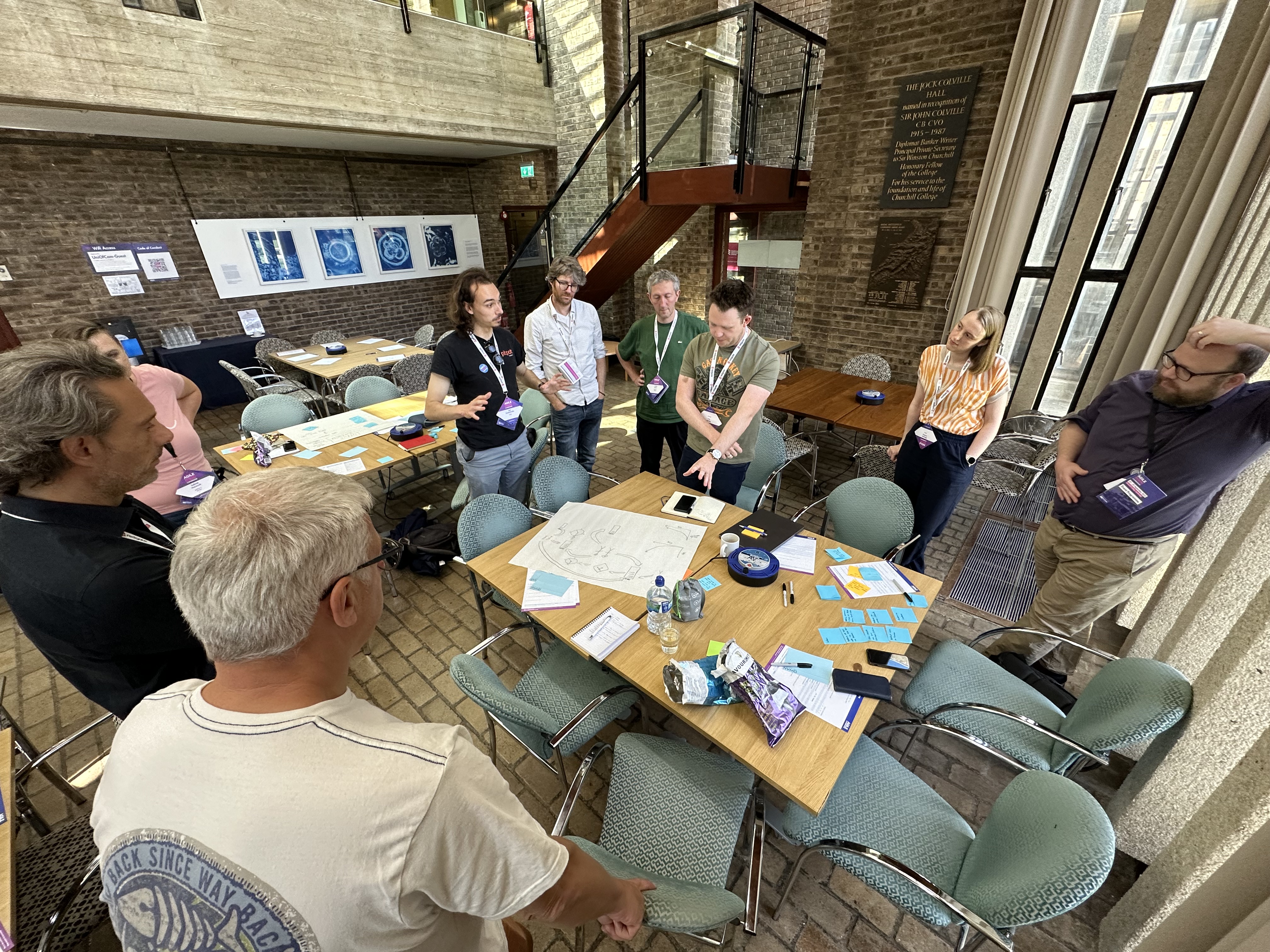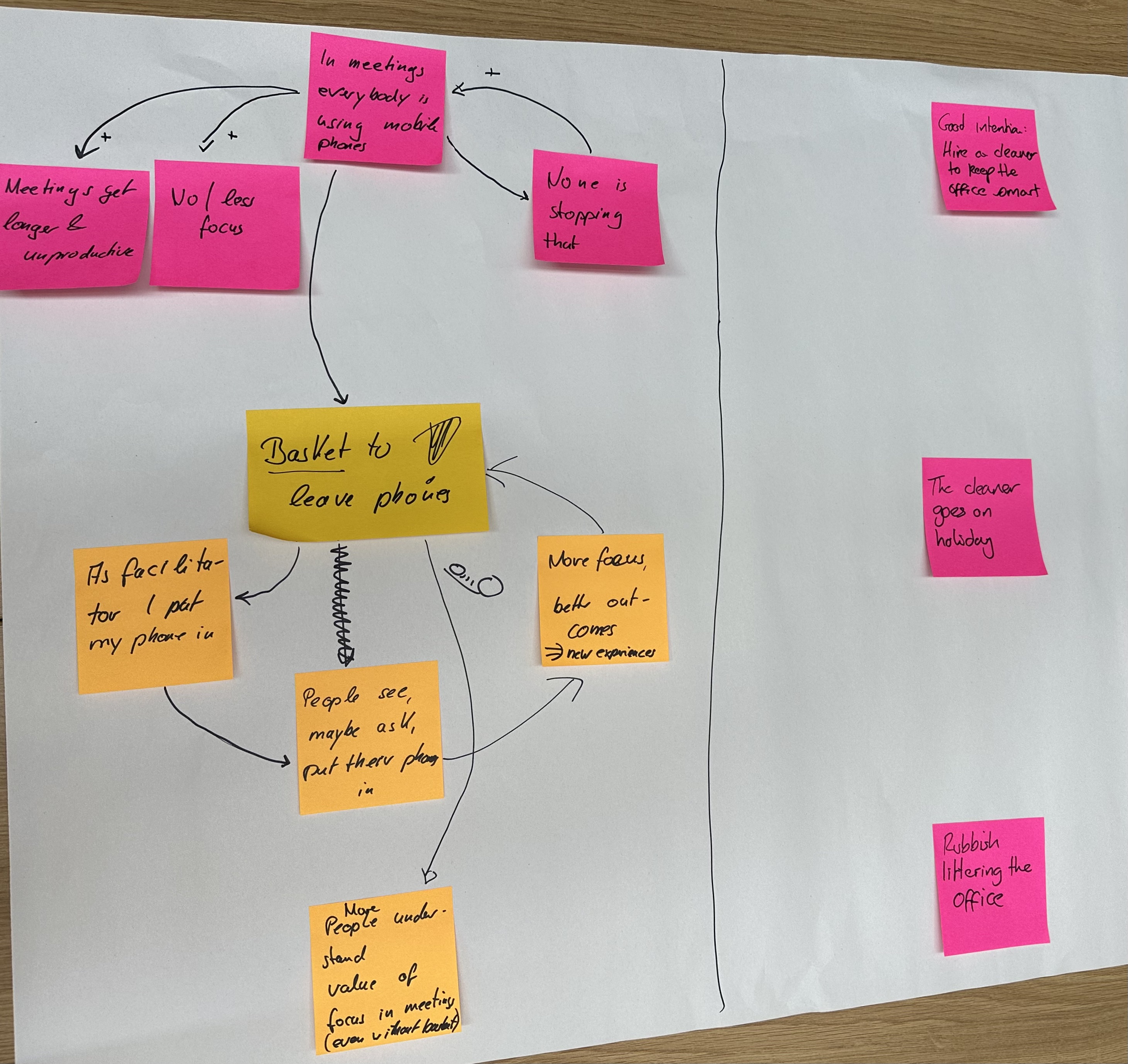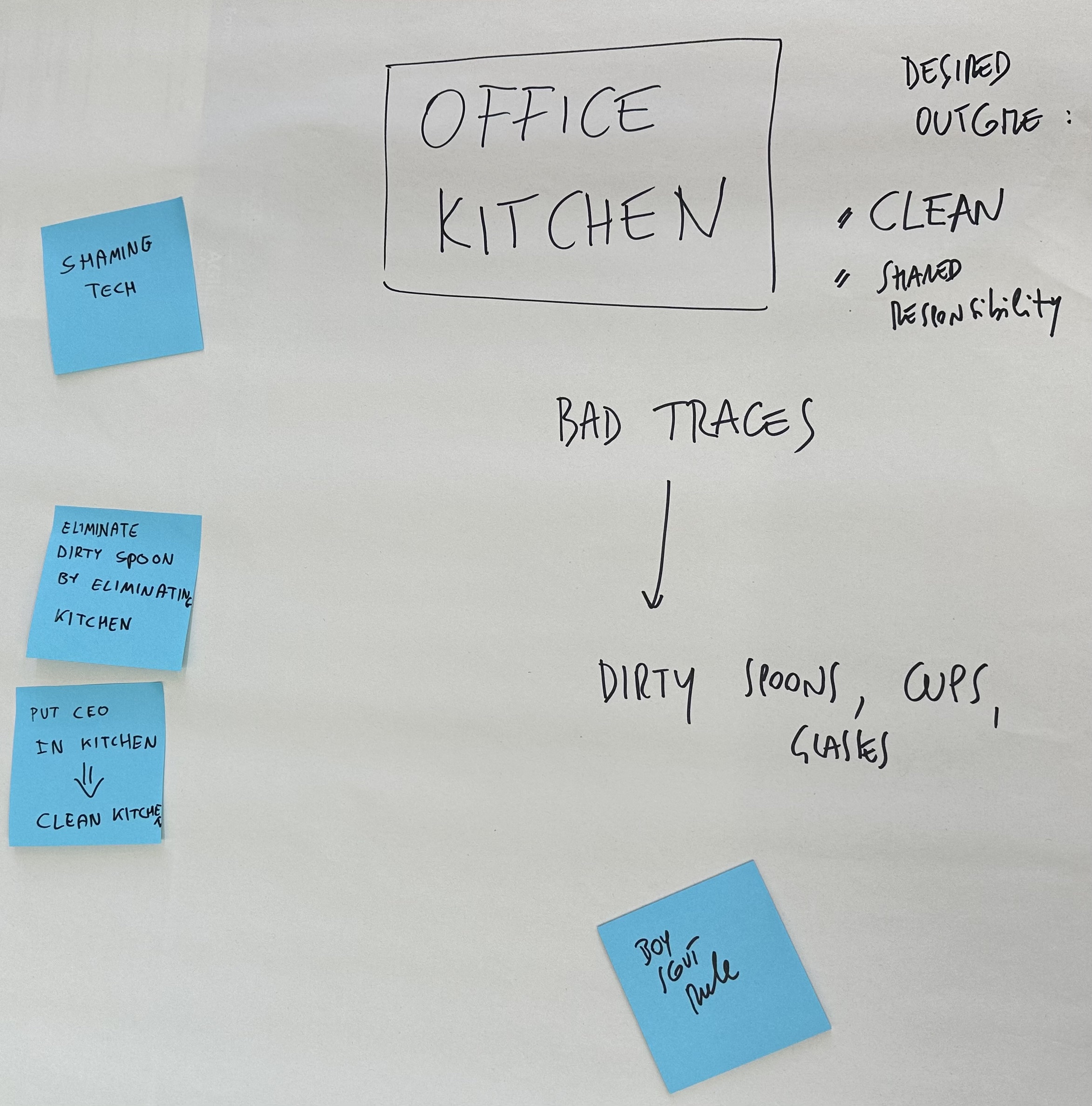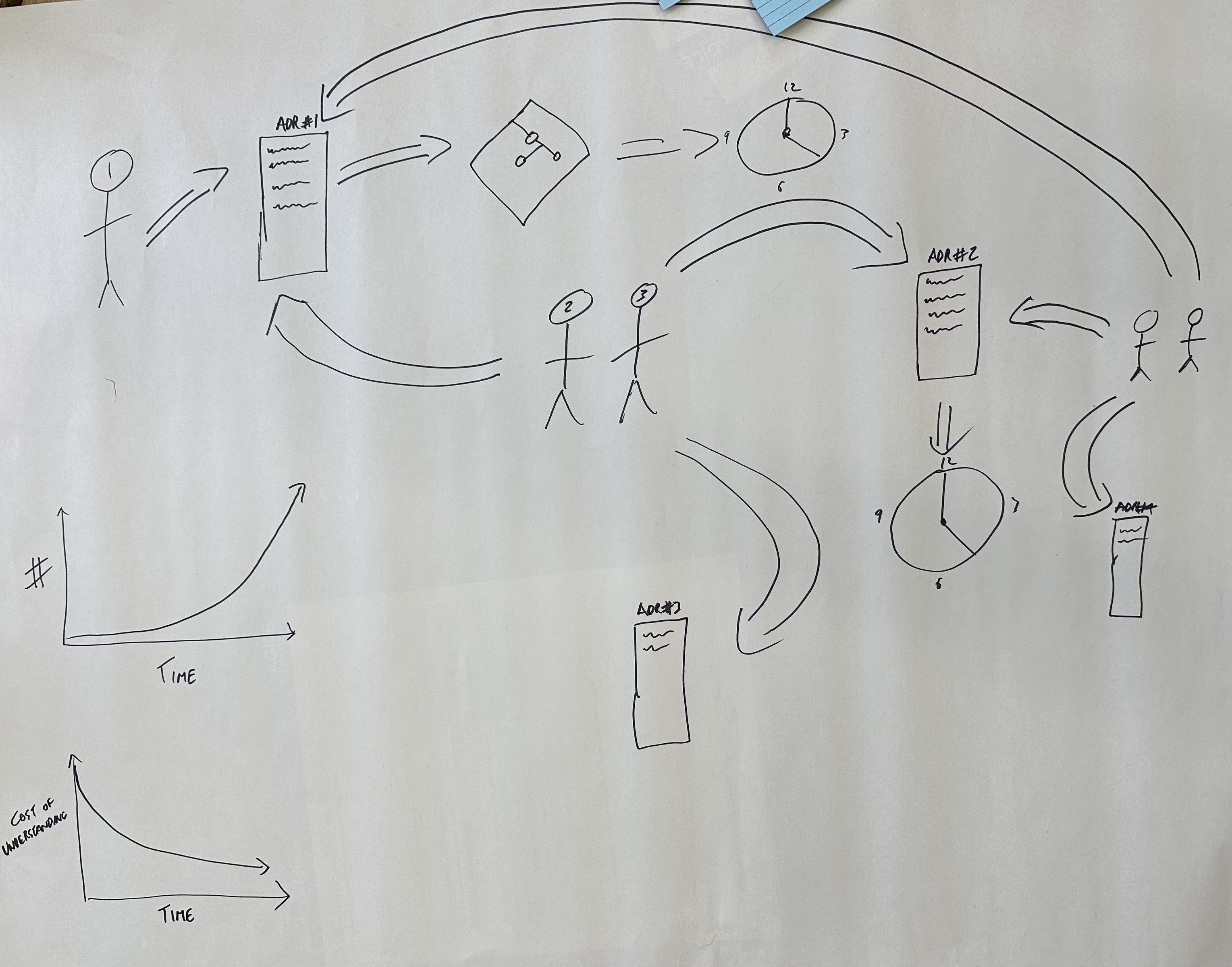On 29 September, Marc Evers and Willem van den Ende ran the second Stigmergy at Work workshop, at Agile Cambridge 2023. It is part of a series of workshops we run at conference to explore the concept of stigmergy within the context of software development (or work in general). The previous workshop was at Lean Agile Scotland 2023.

Stigmergy is a mechanism of indirect coordination, through the environment, between agents or actions. In the workshops, we try to find examples of stigmergy at play, for good or bad. In the Agile Cambridge workshop, we had three groups working on three different stories:
- People in meetings distracted by their phones
- Office kitchens – some are tidier than others
- Getting traction with Architecture Decision Records (ADRs)
Phones in meetings
The story is about people looking at their phones during meetings, “scrolling their dopamine hits”, and not paying attention to what is happening in the meeting. The story originates from when one of the participants got a phone basket, to keep them focused on the meeting. But participants can look at the basket and decide not to put in the phone, since “I’m not distracted”. Not putting in your phone then invites others to do the same, which then invites scrolling during meetings…

Participants reported that when the most senior person in the meeting uses their phone, it gives others permission to do so as well. They look at the environment and take cues from it. These cues include physical traces (the phones on the table), but also behaviors of others. This is a nice example of stigmergy at play.
What could the group do to change this for the better? Having an agreement to use the phone basket is a start, but it requires continuous reinforcement. The basket itself acts as a physical reminder and creates a visible trace in the environment.
Office kitchens: keeping them clean
This story was about how some office kitchens are tidier than others, even within the same organization. The group noticed that when there are dirty cups left around, it invites people to add more dirty items. It’s like the “broken windows” effect - disorder breeds more disorder.

The group identified several stigmergic patterns:
- Dirty cups and dishes left around signal that it’s acceptable to leave your own
- A clean kitchen encourages people to maintain its cleanliness
- The placement of bins and dishwashers affects behavior
Potential interventions discussed included:
- Strategic placement of recycling bins and dishwashers
- Leading by example - when leadership cleans up, others follow
- Creating visible reminders or signs (though these can become “background noise” over time)
Architecture Decision Records (ADRs) growing organically
The third group discussed how Architecture Decision Records spread through their organization without formal mandate. One team started keeping markdown files with their architectural decisions in their source repository. Other teams noticed this practice and began adopting it.

The stigmergic effects included:
- ADR files in repositories served as traces that others could discover
- Seeing the benefits (reduced time to understand code, faster decision-making) encouraged adoption
- The practice spread from team to team without central coordination
This is a positive example of stigmergy - the environment (source code repositories) carried traces (ADR files) that influenced behavior (other teams adopting the practice). The group noted that this organic spread was more effective than a top-down mandate would have been.
Reflections
These three examples show stigmergy at work in different ways:
- Phones in meetings: Physical objects and behaviors create traces that influence group norms
- Kitchen cleanliness: Environmental state signals acceptable behavior
- ADRs: Artifacts in shared spaces inspire imitation and adoption
The workshop highlighted how understanding stigmergy can help us design better work environments and practices. By being mindful of the traces we leave and how they might influence others, we can create positive feedback loops that encourage beneficial behaviors.
What’s next?
We will be running the next Stigmergy workshop at XP Days Benelux in Heeze, Netherlands. If you’re interested in exploring how environmental traces shape behavior in your workplace, come join us!
